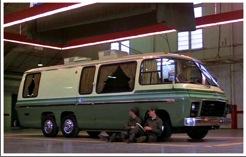Below is an online article I literally stumbled upon while looking at the many motorhome images of the GMC accessible via the web. After reading you'll see why this one caught my eye. It's an admiring, non-owner's view of the bold approach GM took in creating the timeless design of the GMC motorhome. By the way, click on the Automotive Traveler banner to be taken to a fascinating site dedicated to covering all things unique, classic or exotic that are automotive.
Webmaster

Looking Back on GM’s Heritage: The 1973 to 1978 GMC Motorhome
Written by Rich Truesdell, Automotive Traveler
Thursday, 16 April 2009
For much of the 20th century General Motors was the leading innovator in the design of the widest variety of transportation devices. Nowhere was this spirit of innovation more evident than the design, engineering, and marketing of the 1972 to 1978 GMC MotorHome program.
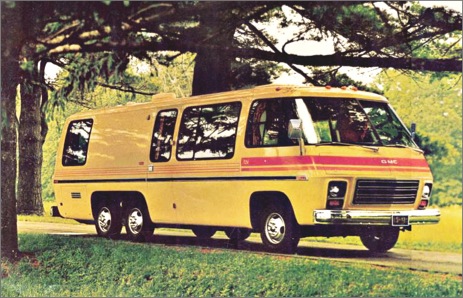
Although I've never taken a vacation in a recreational vehicle, either a travel trailer or any class of motor home, I remain fascinated by all forms of portable hotel rooms. With my penchant for old cars, especially station wagons from 1969, I'm always looking for a vintage trailer small enough and light enough to be towed by my 1969 Rambler but big enough to have on on-board bathroom/shower. However, when discussing the most innovative motor home ever built, the leading candidate, in my opinion, is GMC's revolutionary 1973 to 1978 motorhome.
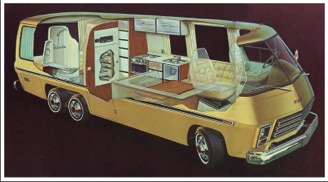
I discovered these unique vehicles on the same knowledge quest while looking for background information for the Cadillac Eldorado, a feature I just produced for Classic American in the UK. Discovering the GMC MotorHome history has sparked a quest for more knowledge that already has me going in six different directions all at once.
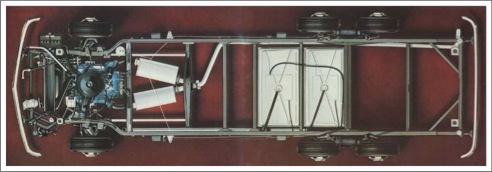
Unlike its contemporaries then as now built on a truck chassis supplied by one of the Detroit Three, the GMC team built a totally integrated package. With all the drivetrain components mounted up front, the motorhomes by GMC had a flat floor 14 inches above the road combined with a very low step-in height, about the same as a contemporary truck-based body-on-frame SUV. Like the Toronado and Eldorado, the GMC motorhome used the GM-designated Turbo-Hydromatic 425 automatic transmission. This marvel of packaging efficiency employed a wide chain drive to connect the output of the longitudinally oriented engine to the transmission. The final drive was connected directly to the transmission, and power was fed to the front wheels using half-shafts that ran under the front portion of the engine.
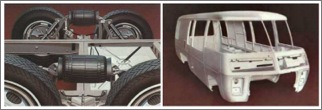
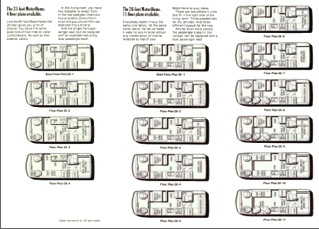
The GMC motorhome deviated even more from its competitors in the area of body construction, which consisted of a rigid welded aluminum frame to save weight mounted on a traditional steel ladder frame using body isolators. The body itself was designed with weight reduction in mind throughout.
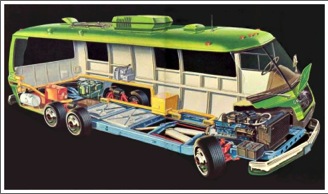
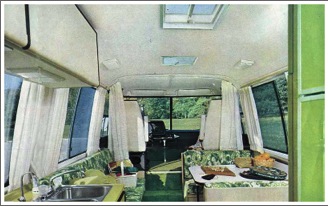
And yes, it was a converted GMC motorhome that became the EM-50 Urban Assault Vehicle that was immortalized in the 1981 Bill Murray blockbuster and comedy classic "Stripes."
While I could go on and on about all the design and engineering innovations that the GMC motorhomes pioneered, it makes little sense to reinvent this particular wheel. So if you are as intrigued as I am about these revolutionary road-going Holiday Inns, I want to point you to the same place I discovered, an exceptionally well-written PDF that provides the whole GMC motorhome story far better than I can tell it in the limited space available here. It is truly an engrossing read. And then there's the equally excellent GMC Motorhome Enthusiast website where I was able to locate the brochure images for this feature. The website is absolutely compelling reading if you are interested in learning more about these technological marvels.
With General Motors now teetering on the brink of a Chapter 11 filing, I find myself looking back more than ever at the highlights of its illustrious 101 year history, an era in which it played a leading role in the development of the American middle class while building hundreds of truly memorable vehicles. I started the process earlier this week with my feature on the 1967 Beaumont SD396 and am continuing the process in looking deeper into the development of these unique vehicles. They were conceived at a time when GM could marshal any of the resources necessary to build virtually any transportation device it desired. This same can-do attitude is exactly what's needed to revitalize GM in the years to come, especially with advanced technology vehicles like the plug-in hybrid Chevy Volt.
To see this article in context, click on the link to be taken to its page at Automotive Traveler.
• • • • • •









